What is a cold sore?
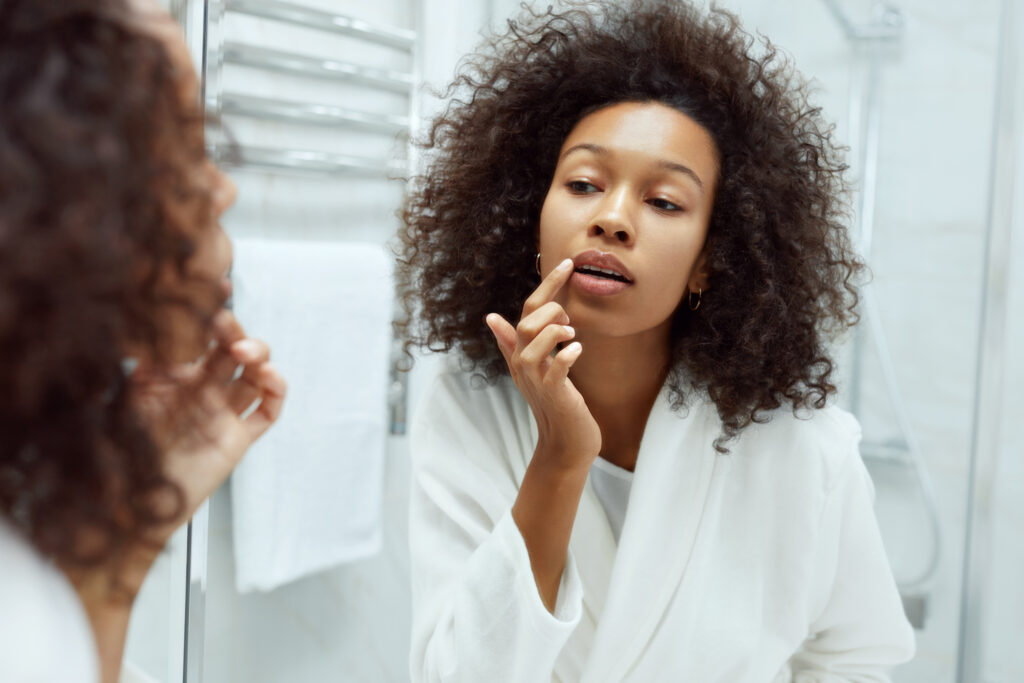
Cold sores are a common viral infection (typically herpes simplex virus type 1) that often begin with sensations of tingling, itching, or burning. They most commonly then develop into a fluid-filled blister on or around an individual’s lips. They are transmitted by person-to-person contact and can take 1 to 2 weeks to heal completely.1 While there are various methods available to manage cold sores, laser therapy is emerging as an optimal treatment option.
Causes of Cold Sores
Once an individual contracts the herpes simplex virus, it remains in their body indefinitely. Most of the time, the virus will remain inactive (dormant). However, it can be triggered and activated by things such as sunlight, fatigue, injury to the affected site, stress, and hormones which can lead to an outbreak. The frequency of outbreak depends on the individual.2
What is Laser Therapy?
Laser therapy is a non-invasive treatment that uses a high-intensity light to stimulate the body’s natural healing processes. The laser emits a specific wavelength of light that is absorbed by the tissues in the affected area, stimulating cellular activity and promoting blood flow. The increased blood flow helps to speed up the healing process, reducing pain and inflammation.3
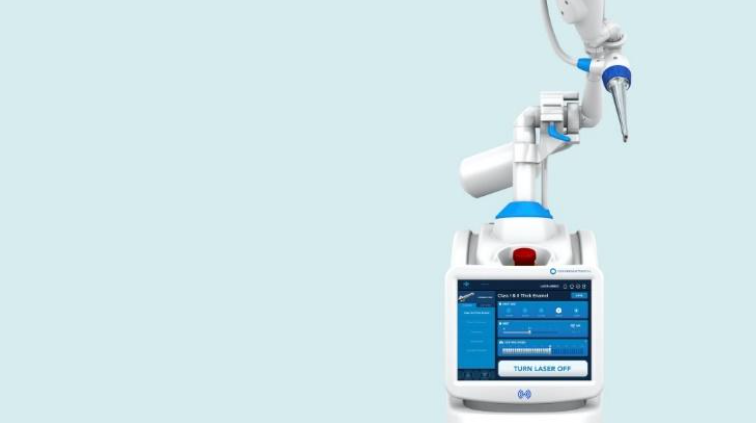
How does Laser Therapy treat Cold Sores?
Laser therapy has been found to be effective in treating cold sores by reducing the intensity of symptoms and stimulating faster healing. When used to treat cold sores, the laser is focused at the affected area, targeting the virus directly. The laser energy heats up the virus, causing it to break down and reducing its ability to replicate and spread.
Laser therapy has been shown to be extremely effective at reducing the duration of cold sores, with some studies reporting a drastic reduction in healing time. Additionally, laser therapy can also help to reduce pain and inflammation associated with cold sores, making it a popular choice for those looking to manage their symptoms.4
The Laser Treatment Process
Undergoing laser therapy for a cold sore outbreak involves just a few simple steps:
Pre-Treatment
- The area will be cleaned and prepared. The doctor may apply a topical anesthetic to minimize discomfort.
- Protective eyewear will be provided to shield your eyes from the laser light.
During Treatment
- You’ll be seated comfortably and special safety goggles will be given to you for eye protection.
- The technician will position the handheld laser device directly over the cold sore.
- Pulses of therapeutic laser light will be delivered to the affected area. This only takes 2-3 minutes. You may feel a warm tingling sensation.
After completing the targeted area, a soothing gel or ointment may be applied.
After Care
- Use ice packs and over-the-counter pain medication as needed for swelling or discomfort.
- Avoid picking at scabs as the cold sore heals. Keep the area clean.
- You may apply a healing ointment to keep the area moisturized.
- Follow up with your provider if symptoms persist beyond one week.
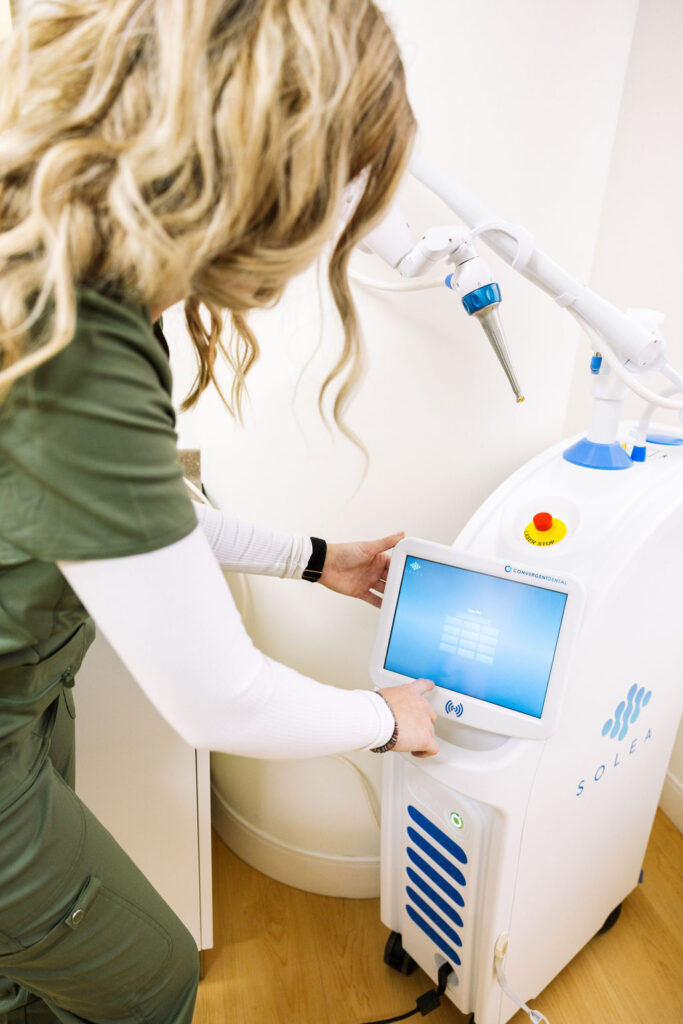
How Laser Compares to Medications and Home Remedies
While medications and home remedies can provide some relief for cold sores, laser therapy has proven to be more effective for many patients.
- Over-the-counter ointments – These can help with pain and swelling but don’t treat the virus or speed healing.
- Prescription antiviral medication – Shortens duration by 1-2 days but can have side effects like nausea and slow onset.
- Natural remedies like tea tree oil and lysine – Have not shown strong clinical evidence for treating cold sores.
In comparison, laser therapy is side effect-free and clinical studies have shown it can reduce healing time by up to 5 days by targeting the virus directly.
Types of Lasers Used for Cold Sores
The most common laser types used for cold sore treatment include:
- Carbon dioxide (CO2) lasers: These can penetrate surface tissues and precisely target viral lesions.
- Er:YAG lasers: Produce a wavelength absorbed optimally by water molecules in the affected tissues.
- Low-level or soft lasers: These stimulate healing at cellular level and reduce inflammation.
- Pulsed-dye lasers: Flexible devices that offer treatment for early and late-stage cold sore lesions.
Our clinic uses the cutting-edge Solea laser because of its ability to deliver fast, precise results with minimal side effects for cold sores.
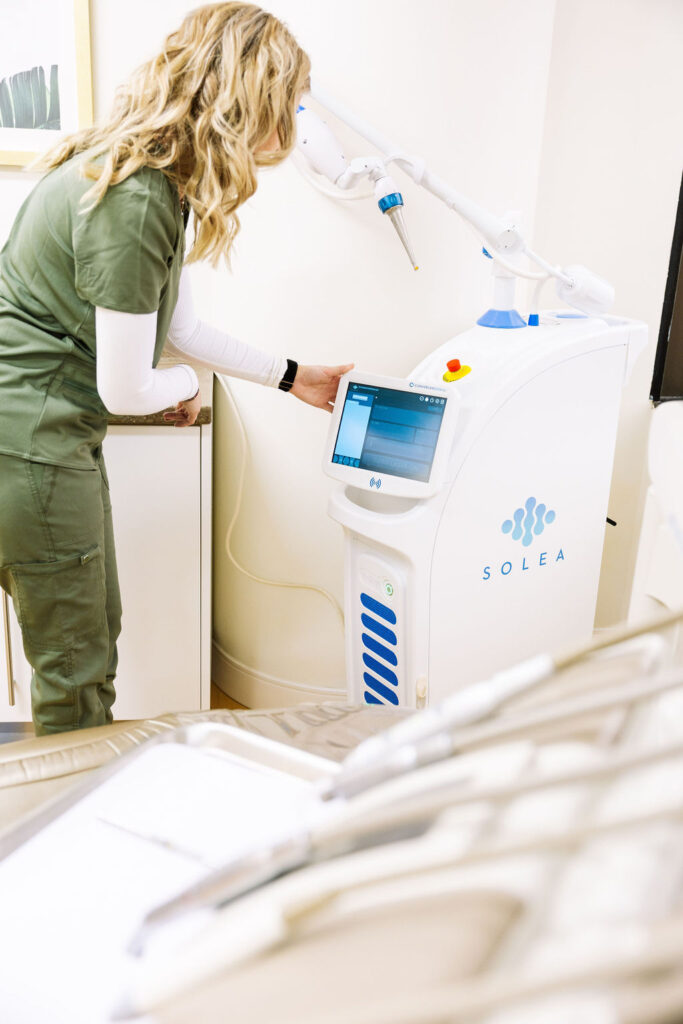
Preventing Outbreaks with Lifestyle Changes
While laser therapy is extremely effective at treating active cold sores and reducing future outbreaks, you can further protect yourself by implementing some simple lifestyle measures:
- Practice stress management – Chronic stress takes a toll on your immune system, making you more prone to outbreaks. Try relaxation techniques like yoga, meditation, and deep breathing.
- Get adequate sleep – Fatigue compromises your immune defenses. Adults should aim for 7-9 hours of quality sleep per night. Maintain consistent bed and wake times.
- Wear SPF daily – Exposure to UV light is a common trigger for cold sores. Apply a broad spectrum, water-resistant sunscreen with at least SPF 30 whenever going outside.
- Avoid excessive hot or cold temperatures – Temperature extremes can trigger outbreaks. Keep your face protected in winter and avoid overheating in summer.
- Don’t share personal items – Using someone else’s lip balm, silverware, razors or towels can spread the virus. Keep your personal care items to yourself.
- Take L-lysine supplements – Some research indicates the amino acid L-lysine may help inhibit the virus and control outbreaks when taken regularly.
- Quit smoking – Smoking impairs immune function and can make you more prone to recurrent cold sores. Talk to your doctor about smoking cessation aids if needed.
With a combination of laser therapy treatments and a healthy lifestyle, you can gain control over cold sores and experience long outbreak-free periods.
Benefits of Treating Cold Sores with Laser Therapy
There are several benefits of using laser therapy to treat cold sores. First, it is a non-invasive treatment, meaning there is no need for incisions or injections, reducing the risk of infection and scarring. Second, laser therapy can be completed quickly and easily, with most treatments taking only a few minutes to complete. Finally, laser therapy has been shown to be effective in reducing the severity of symptoms and promoting faster healing. In some cases, treatment can also prevent the reoccurrence of a sore in the same location.5
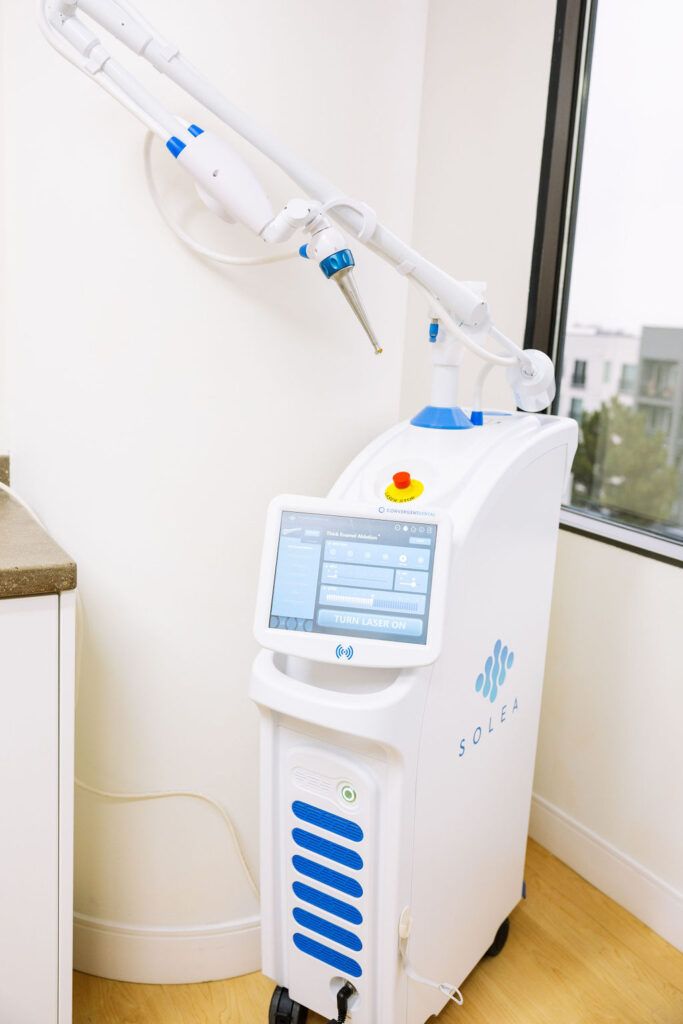
Are there any Side Effects of Laser Therapy for Cold Sores?
Laser therapy is a safe and effective treatment option for cold sores with few reported side effects. Some individuals may experience mild redness or discomfort at the treatment site, but these symptoms typically resolve within a few days. It is important to note that laser therapy should not be used on individuals with certain medical conditions, such as those with active skin infections, as it may increase the risk of complications.
Is Laser Therapy Right for You?
Laser therapy is a promising treatment option for those looking to manage their cold sore symptoms. With its ability to relieve symptoms and promote faster healing, it is an attractive alternative to traditional treatments. If you experience cold sores, we welcome you to call our office and explore the ways that Dr. Dickerson can support your healing with our Solea laser! 720.842.7002
Frequently Asked Questions
Sources
- https://www.mayoclinic.org/diseases-conditions/cold-sore/symptoms-causes/syc-20371017
- https://www.nhsinform.scot/illnesses-and-conditions/mouth/cold-sore#:~:text=Cold%20sores%20are%20small%20blisters,with%20the%20herpes%20simplex%20virus.
- https://sharondickersondds.com/solea-laser/
- https://www.ncbi.nlm.nih.gov/pmc/articles/PMC8558700/
- https://seattlesmilesdental.com/service/cold-sore-laser-treatment/

